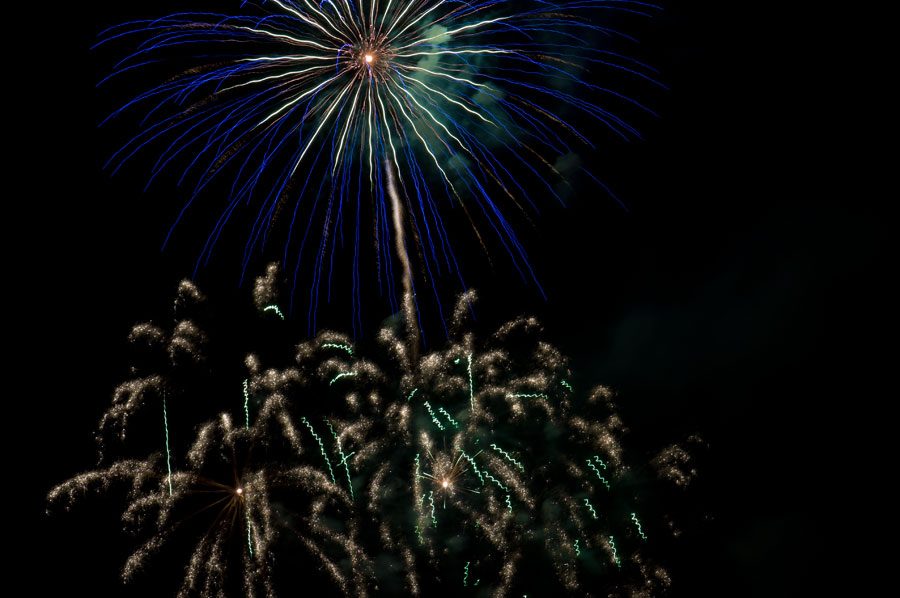Since the 4th of July is fast approaching, now is the perfect time to share some useful tips, tricks and camera/lens settings that will help you take better pictures of fireworks. Getting the proper exposure at night poses challenges as it is, and when you add moving subjects, it can make it even more complex. Use this article as a guide, and you will be taking stunning shots of fireworks in no time.
1. Search for a Great Location
Search online to find out where there are going to be fireworks in your area. Make sure you plan to get there early so you can set up your gear in a good spot. Generally, you don’t want to be too close to the fireworks because you will have to strain your neck, get down low and shoot up at an extreme angle, which makes the experience more difficult and less enjoyable. Ideally, you want your camera at a 45-degree or smaller angle, so you are comfortable.
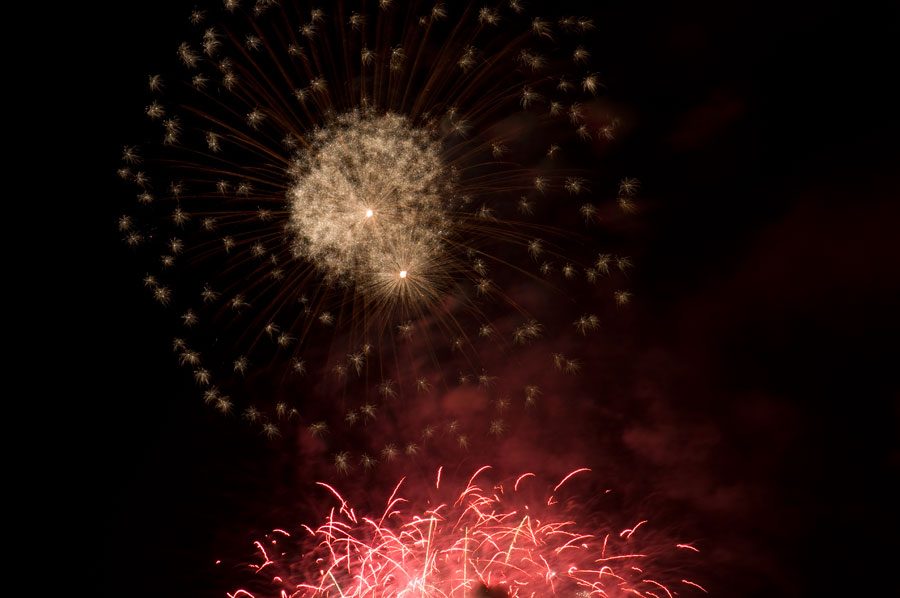
2. Photo Gear
Camera
Many people are under the false impression that you must use expensive gear to create amazing photographs. This is not true, and you don’t need a top-notch camera to capture night photos. You can use a point-and-shoot, mirrorless camera or any Digital SLR as long as it has a Manual (M) mode. Alternatively, if your point-and-shoot has a fireworks scene mode, you can use that.
Lens
This depends on your location in relation to the fireworks. If you are pretty close, a lens between the focal lengths of 24mm and 70mm will work just fine. If you are further away from the fireworks display, then you’ll want to use a zoom with a focal length greater than 70mm. Your best bet is to bring numerous lenses with you or find a vantage point that best suits the lens or lenses that you own. If you are using a point and shoot camera, make sure that the lens on it has at least a 5x optical zoom. This way you will be able to get good shots whether you are close or far away from the fireworks.
Tripod
A tripod is an absolute must-have for all night photography. It helps prevent camera shake, and ensures that your shots will be sharp. It is impossible to hold your camera perfectly still for long exposures, so a tripod is essential. Before you purchase a tripod, do some research to make sure that the model you are getting can support the combined weight of your camera and lens. Tripods can get pricey, but you don’t have to spend an arm and a leg to get a sturdy tripod that will work for you.
Remote Shutter Release
It is very helpful to have a remote shutter release for long exposures, so you don’t have to use your camera’s self-timer. The self-timer method works, but it is harder to time the shots correctly. Using a remote, you can accurately time the release of your camera’s shutter without trying to account for a 2 or 5-second delay, and can use Bulb mode in which you can start and stop the exposure whenever you want. With long exposures, you don’t want to press the shutter release button on your camera as it will cause camera shake and make your shots kind of blurry.
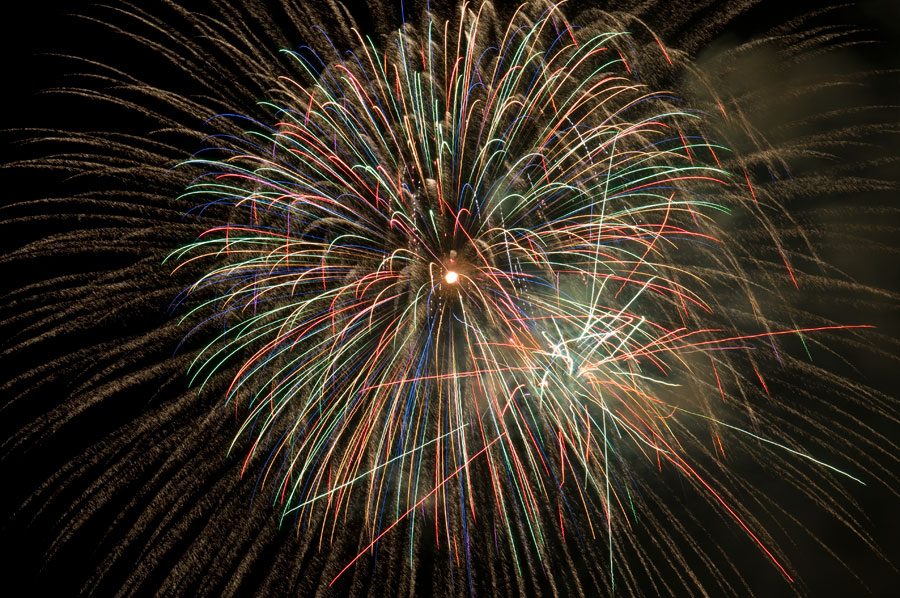
3. Camera & Lens Settings
Camera Mode
You will want to have complete control over both aperture and shutter speed, so use Manual (M) mode.
Image Format
If your camera can shoot in RAW, make sure to use it instead of JPEG. It has many advantages, and doesn’t compress the pixel information in your images.
White Balance
If you shoot in RAW mode, you can set this to Auto and adjust it in post-processing. If your camera does not shoot RAW, play around with different white balances to see which one is most accurate (I don’t know much about this because I always shoot in the RAW format).
ISO
Since fireworks are very bright and you’ll be taking long exposures, using an ISO of 100 or below will yield good results. Use the lowest ISO on your camera and take some test shots.
Shutter Speed
As a baseline shutter speed you can use 3 or 4 seconds. Generally, you will want to use shutter speeds longer than 1 second to capture the whole duration of each explosion. Play around with different settings and see which ones yield the best results. As you can see in the captions above, I use a variety of different shutter speeds.
Aperture
Set your aperture between f/8 and f/12 to start, but feel free to test different apertures.
Focus
Cameras have a hard time focusing at night with limited light, and especially with moving subjects. If you are using a point and shoot, your options for manually focusing may be rather limited. Wait for a bright explosion, then try to automatically focus on that. Make sure you review the shot in your LCD screen to ensure that it is sharp.
If you are using a Digital SLR, you can try a couple different methods to get the focus tack sharp. First, set the focus of your lens to manual and set it to infinity (∞). Take a test shot or two, and make sure the fireworks you have captured are sharp. The second option is to temporarily use auto focus to make sure the fireworks are sharp, then switch to manual focus. Using the second method, you are guaranteed to have sharp photos provided you remain in the same spot. Also, your camera won’t have to focus for every shot, making sure your shutter is released right away.
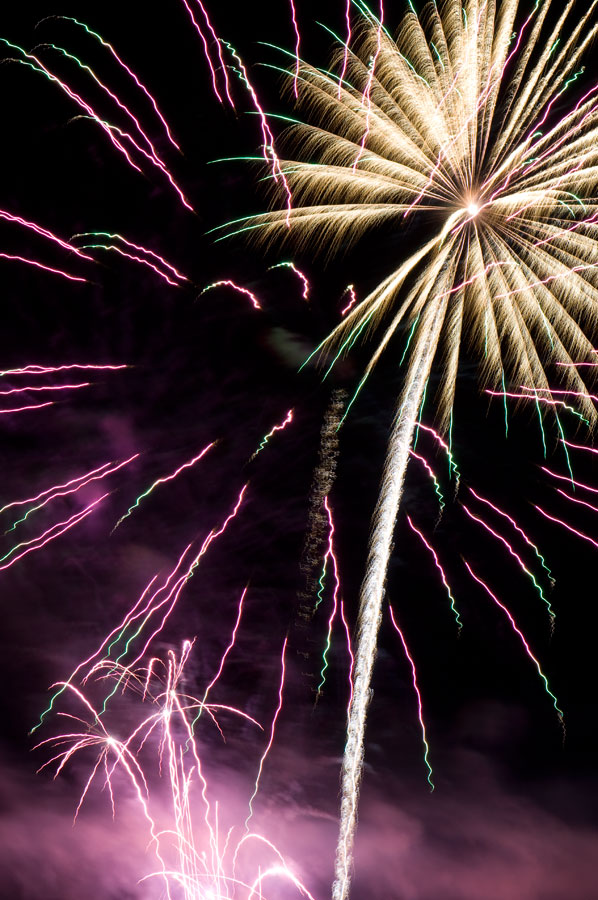
5. Additional Camera Settings
Vibration Reduction/Image Stabilization
If your lens has vibration reduction or image stabilization, make sure you turn it off. While using a tripod, this does nothing but mess things up, and can actually cause your camera to move right before the shutter is released.
Long Exposure Noise Reduction
For optimal image quality, you will want to make sure that long exposure noise reduction is turned on. This makes sure that your camera removes as much noise (or grain) as it can in your images. It won’t necessarily remove all noise, but will ensure the images is as good as it can be straight out of the camera.
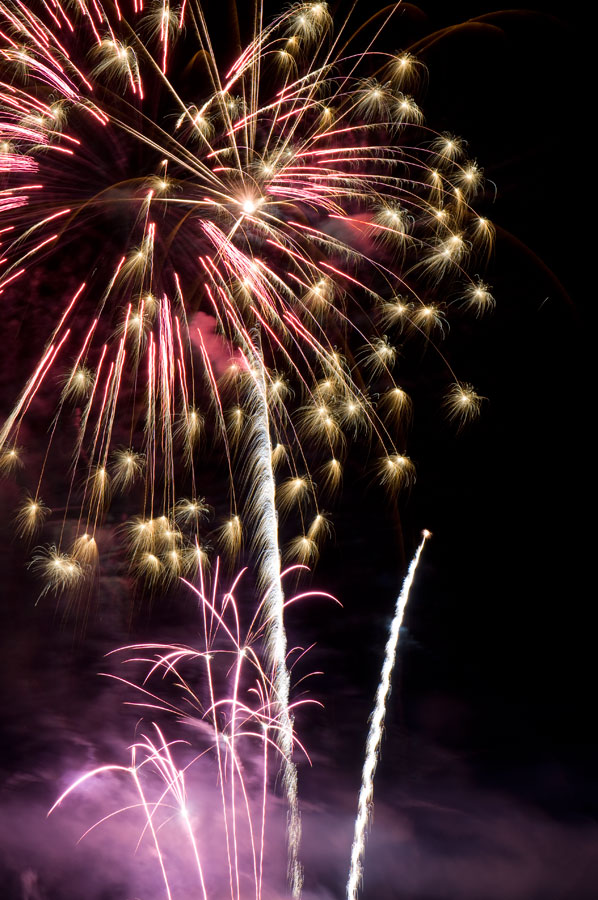
6. Capturing the Fireworks
Nailing the Exposure
In order to get the exposure just right, you will want to take a few test shots. If your image is too dark, increase the aperture (smaller f/stop) and take another test shot. If your image is overexposed, decrease the aperture (larger f/stop). Play around with your settings until you get it just right. Once you have accurate settings, you can adjust the shutter speed, trying shorter and longer exposures to see how it affects your images.
Framing the Action
When it comes to accurately framing fireworks, you will need to be patient. It takes some practice to learn to time your exposures correctly. This is where it really helps to have a remote shutter release, so you can use Bulb mode on your camera. With it, you can open the shutter when the fireworks explode and close it a few seconds later once the explosion is complete, and before the next round of fireworks enters your frame.
There are a number of things to keep in mind when taking pictures of fireworks. Don’t let all the settings overwhelm you – it’s not that tough if you just go through them slowly. Can you think of any tips or techniques for photographing fireworks that I may have overlooked? Keep the discussion going by leaving a question or comment below.
Did you like this post? Feel free to share it and subscribe to our newsletter for helpful photography tips, resources and information delivered straight to your inbox. Simply enter your email in the opt-in above. Your email address is safe with us, and we will never share it.
If you have any questions or comments, please leave them below. I will respond as soon as possible.

